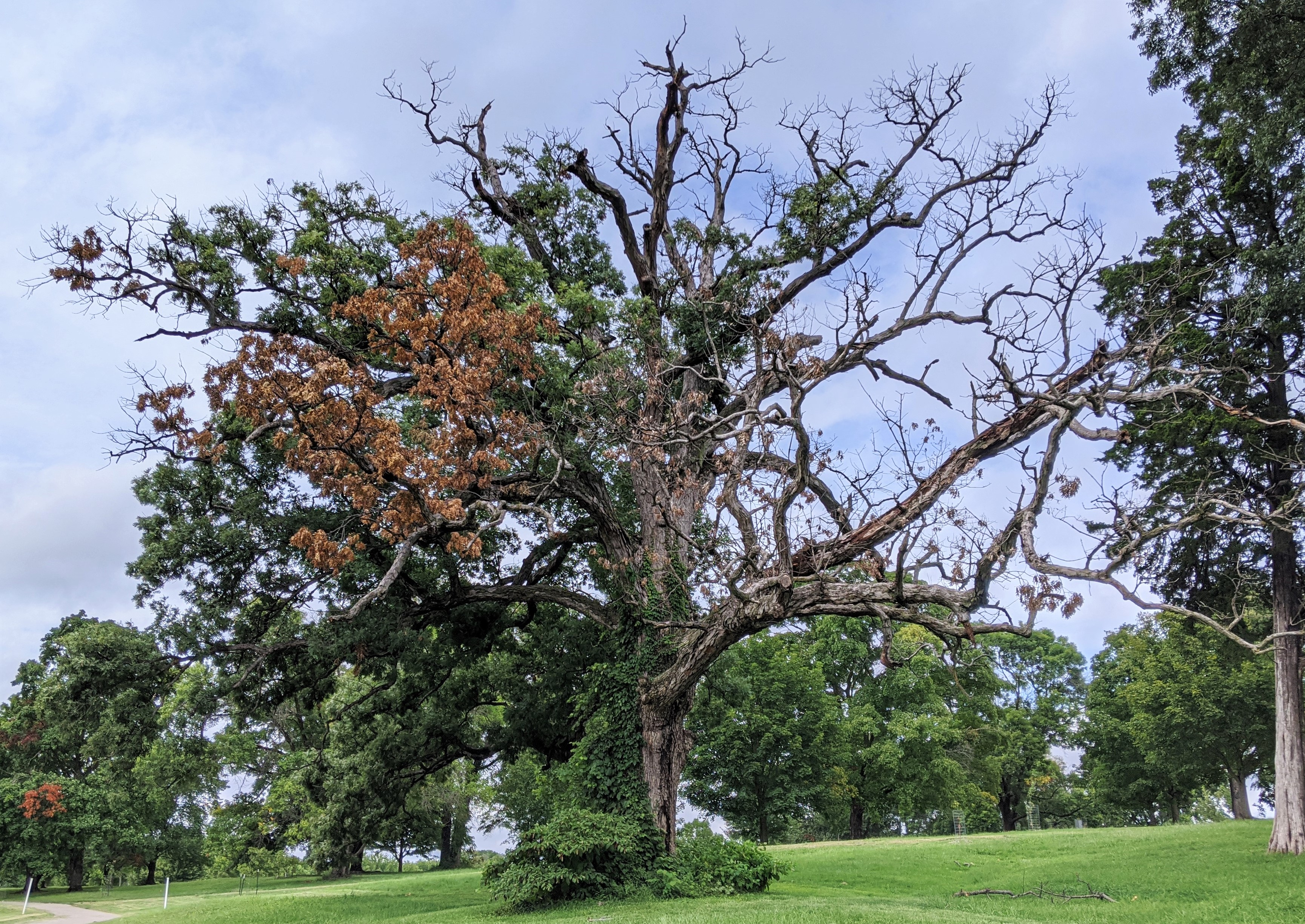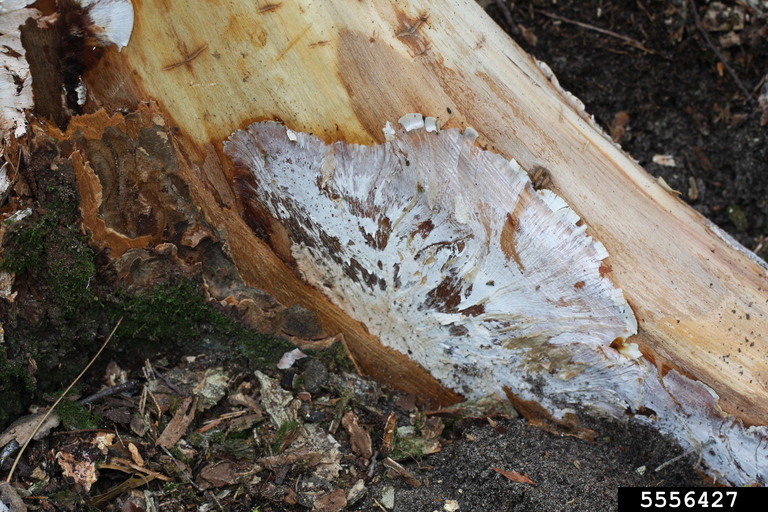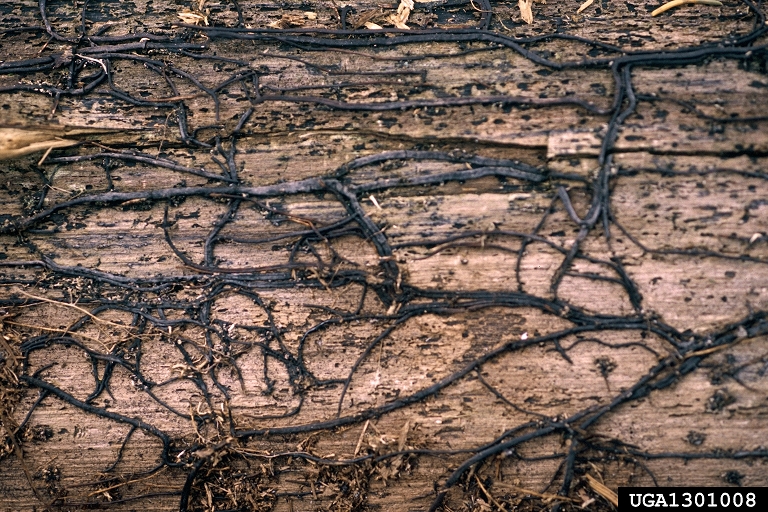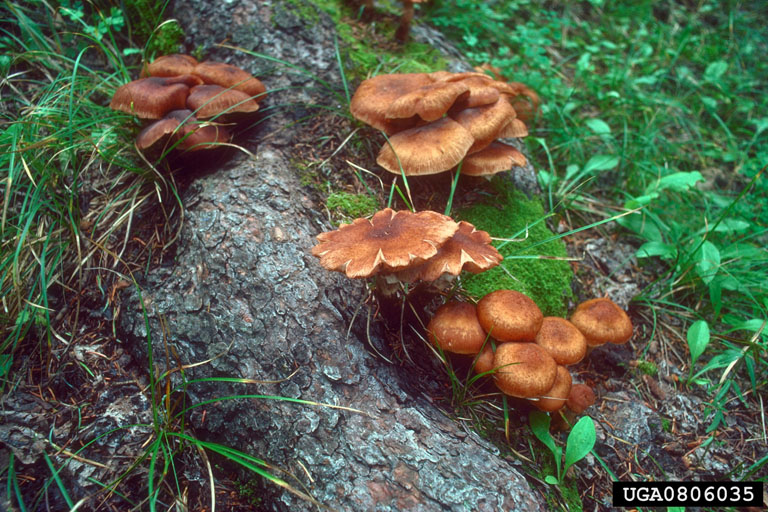Armillaria root rot is a common root disease of trees and other woody plants, caused by several closely related Armillaria species. These fungi can be parasitic on living trees or simply live on dead and decaying wood. In Missouri, Armillaria root rot typically infects trees that are weakened or stressed by drought, root damage, defoliation (leaf loss), or other causes.
Armillaria root rot is often referred to as a “disease of the site,” because once established the fungi can live for years on the roots and stump of a dead tree, eventually spreading to the roots of nearby living trees. In urban or yard settings, Armillaria root rot can result in hazardous trees and make it difficult to establish new trees.
Tree Species Affected
Armillaria can infect more than 200 species of hardwoods and conifers. Oaks, elms, and maples are highly susceptible.

Symptoms and Signs
Initial symptoms often include stunted leaves, reduced tree vigor, and canopy thinning. As the disease progresses, significant branch dieback becomes noticeable and root and heart rot weakens the tree structure. In late summer and fall, clusters of honey-colored Armillaria mushrooms may grow at the base of infected trees.
As fungi absorbs nutrients from the heartwood of trees, a white rot results, characterized by soft, stringy wood. Removing the bark from the lower trunk and roots may reveal white, fan-like mats of fungal tissue.
During the later stages of infection or after trees have died, dark brown, string-like structures called rhizomorphs may also be found beneath the bark on the lower trunk and roots. In forested settings, pockets of dead and dying trees can occur as Armillaria spreads from infection centers to neighboring trees.



Recommendations
There are few effective treatments for Armillaria outside of prevention-based measures. Trees with extensive Armillaria colonization can be structurally unsound and should be assessed by a certified arborist for hazard status. Find ISA certified arborists in your area by visiting www.treesaregood.org.
Prevention
Maintaining tree vigor and reducing stress will reduce the chances of infection.
In urban settings:
- Water trees during dry periods.
- Use mulch.
- Avoid wounding trees.
In forest settings:
- Practice good forest management.
- Avoid damaging standing trees during construction and logging activities.
If you remove trees with Armillaria from a site, also remove all root and stump material to reduce the amount of Armillaria present to cause new infections.
It may be difficult to establish new trees in areas where Armillaria is present. Good tree care and selection of Armillaria-resistant species can improve the chance of success.
- American sweet gum
- Bald cypress
- Black cherry
- Cucumber magnolia
- Hackberry
- Kentucky coffee tree
- Pawpaw
- Pecan
- Sycamore
- Thornless honeylocust
- Tulip tree (yellow poplar)





















